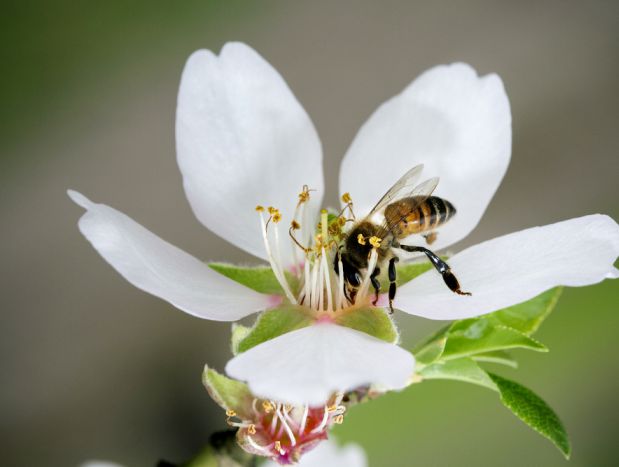By: Gareth Willmer
Send to a friend
The details you provide on this page will not be used to send unsolicited email, and will not be sold to a 3rd party. See privacy policy.
Boosting the number of pollinators could increase crop yields on small farms in developing countries, a study says.
In a five-year study published in the journal Science last month (22 January), researchers examined the gap between the highest- and lowest-yielding farms for pollinator-dependent crops, using a standard protocol across 344 fields in Africa, Asia and Latin America.
They found that, on farms of less than two hectares, increasing flower visits from 2.5 to 5.5 pollinators for every 100 flowers can reduce this yield gap by a quarter.
“The findings, if properly utilised, will help to revive this sector, and more so in developing countries that only depend on wild pollinators.”
Hakim Baliraine, ESAFF
For larger farms, crop yields were also greater when there were more pollinators, but only when the variety of such species was high.
Many crops rely on wild pollinators — bees in particular, as well as other insects and vertebrates such as birds — to move pollen from the male organs of a flower and fertilise the female gametes of the same, or another flower.
The study “really shows that there are already pollinator deficits out there. It’s not an ‘if’ anymore,” says coauthor Bernard Vaissière, a researcher in the bees and environment unit at French agricultural research institute INRA.
Parthiba Basu, director of the Centre for Pollination Studies at the University of Calcutta in India, agrees that pollinator populations are declining in intensively farmed areas across the world. For example, there is evidence of such “pollination limitation” in India because of habitat loss and pesticide use, among other factors, Basu says.
But the paper’s authors say it is possible to reverse this trend and attract pollinators, for example by sowing strips of flowers, planting hedgerows, providing nesting sites and limiting pesticide use.
The report addresses an important area that has not been researched much in Africa, says Hakim Baliraine, board chair of ESAFF (Eastern and Southern Africa Small Scale Farmers Forum) Uganda. “The findings, if properly utilised, will help to revive this sector, and more so in developing countries that only depend on wild pollinators,” he says.
Eric Lonsdorf, an ecologist at Franklin & Marshall College in the United States, praises the researchers for beginning to “quantify the gap in food production from various inputs, including pollination”. The study “could be used to show how much more food could be produced per unit area of crop”, he adds.
References
Lucas A. Garibaldi and others Mutually beneficial pollinator diversity and crop yield outcomes in small and large farms (Science, 22 January 2016)














